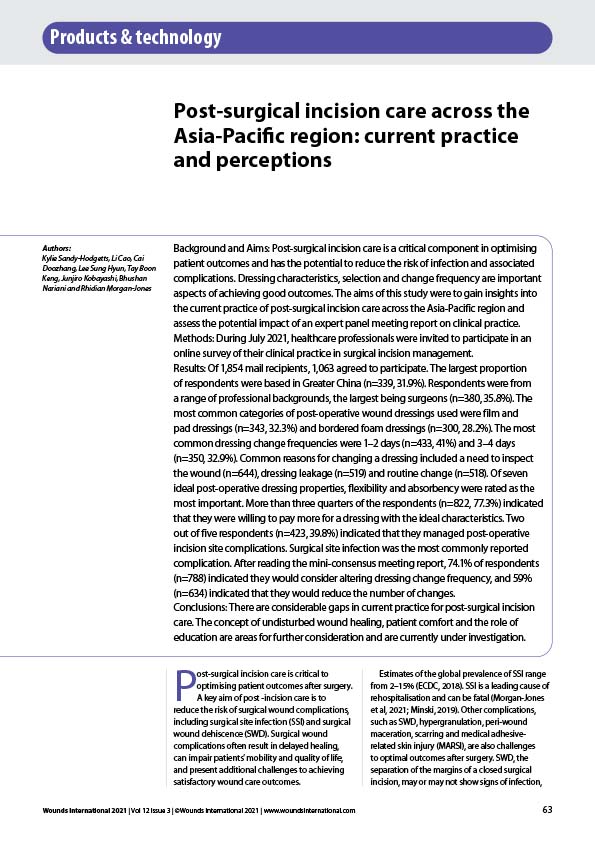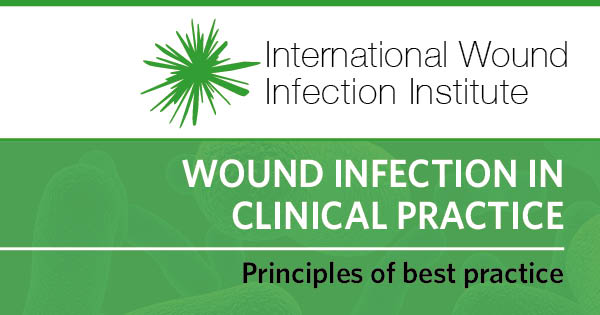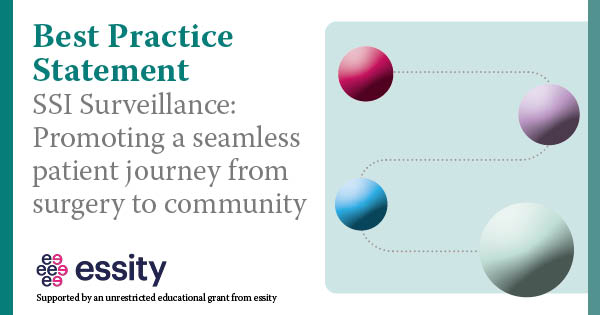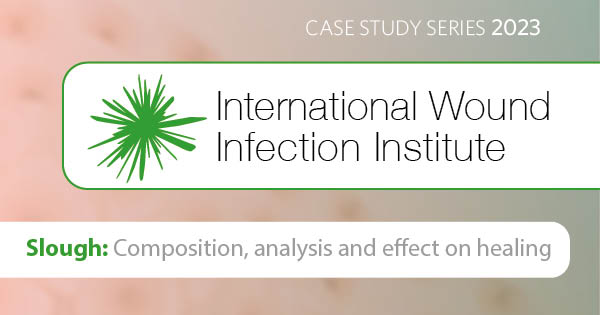Background and Aims: Post-surgical incision care is a critical component in optimising patient outcomes and has the potential to reduce the risk of infection and associated complications. Dressing characteristics, selection and change frequency are important aspects of achieving good outcomes. The aims of this study were to gain insights into the current practice of post-surgical incision care across the Asia-Pacific region and assess the potential impact of an expert panel meeting report on clinical practice. Methods: During July 2021, healthcare professionals were invited to participate in an online survey of their clinical practice in surgical incision management. Results: Of 1,854 mail recipients, 1,063 agreed to participate. The largest proportion of respondents were based in Greater China (n=339, 31.9%). Respondents were from a range of professional backgrounds, the largest being surgeons (n=380, 35.8%). The most common categories of post-operative wound dressings used were film and pad dressings (n=343, 32.3%) and bordered foam dressings (n=300, 28.2%). The most common dressing change frequencies were 1–2 days (n=433, 41%) and 3–4 days (n=350, 32.9%). Common reasons for changing a dressing included a need to inspect the wound (n=644), dressing leakage (n=519) and routine change (n=518). Of seven ideal post-operative dressing properties, flexibility and absorbency were rated as the most important. More than three quarters of the respondents (n=822, 77.3%) indicated that they were willing to pay more for a dressing with the ideal characteristics. Two out of five respondents (n=423, 39.8%) indicated that they managed post-operative incision site complications. Surgical site infection was the most commonly reported complication. After reading the mini-consensus meeting report, 74.1% of respondents (n=788) indicated they would consider altering dressing change frequency, and 59% (n=634) indicated that they would reduce the number of changes. Conclusions: There are considerable gaps in current practice for post-surgical incision care. The concept of undisturbed wound healing, patient comfort and the role of education are areas for further consideration and are currently under investigation.







